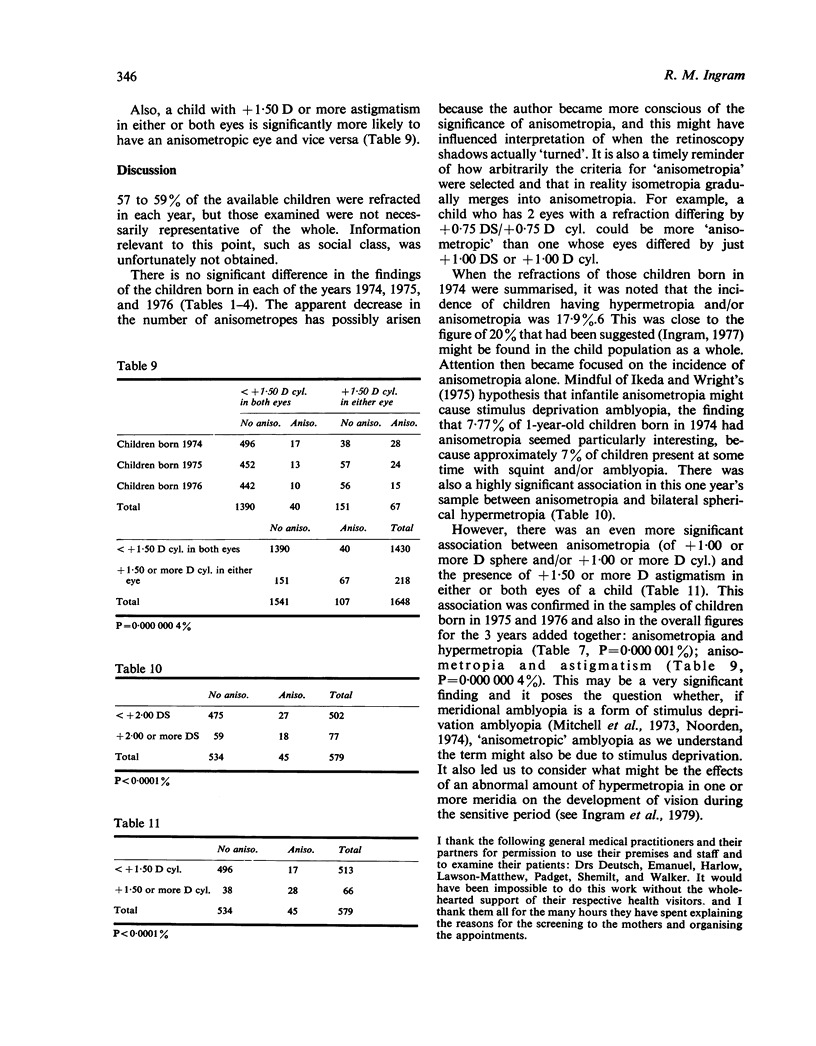Abstract
The refractions of 1648 children aged 11 to 13 months are reported. Atropine 1% was used for cycloplegia. 11.83% of the children had bilateral hypermetropia of +2.00 or more D. 13.23% of them had +1.50 or more D astigmatism in one or both eyes, and 6.5% had anisometropia. Anisometropia was significantly (P=0.000 001%) associated with bilateral hypermetropia, but even more significantly (P=0.000 000 4%) associated with astigmatism of +1.50 or more D in one or both eyes.
Full text
PDF




Selected References
These references are in PubMed. This may not be the complete list of references from this article.
- Davidson S. E. Mydriatic and cycloplegic drugs. Trans Ophthalmol Soc U K. 1976 Jul;96(2):327–329. [PubMed] [Google Scholar]
- Ingram R. M., Barr A. Refraction of 1-year-old children after cycloplegia with 1% cyclopentolate: comparison with findings after atropinisation. Br J Ophthalmol. 1979 May;63(5):348–352. doi: 10.1136/bjo.63.5.348. [DOI] [PMC free article] [PubMed] [Google Scholar]
- Ingram R. M. Refraction as a basis for screening children for squint and amblyopia. Br J Ophthalmol. 1977 Jan;61(1):8–15. doi: 10.1136/bjo.61.1.8. [DOI] [PMC free article] [PubMed] [Google Scholar]
- Ingram R. M., Traynar M. J., Walker C., Wilson J. M. Screening for refractive errors at age 1 year: a pilot study. Br J Ophthalmol. 1979 Apr;63(4):243–250. doi: 10.1136/bjo.63.4.243. [DOI] [PMC free article] [PubMed] [Google Scholar]
- Mitchell D. E., Freeman R. D., Millodot M., Haegerstrom G. Meridional amblyopia: evidence for modification of the human visual system by early visual experience. Vision Res. 1973 Mar;13(3):535–558. doi: 10.1016/0042-6989(73)90023-0. [DOI] [PubMed] [Google Scholar]
- Von Noorden G. K. Factors involved in the production of amblyopia. Br J Ophthalmol. 1974 Mar;58(3):158–164. doi: 10.1136/bjo.58.3.158. [DOI] [PMC free article] [PubMed] [Google Scholar]


